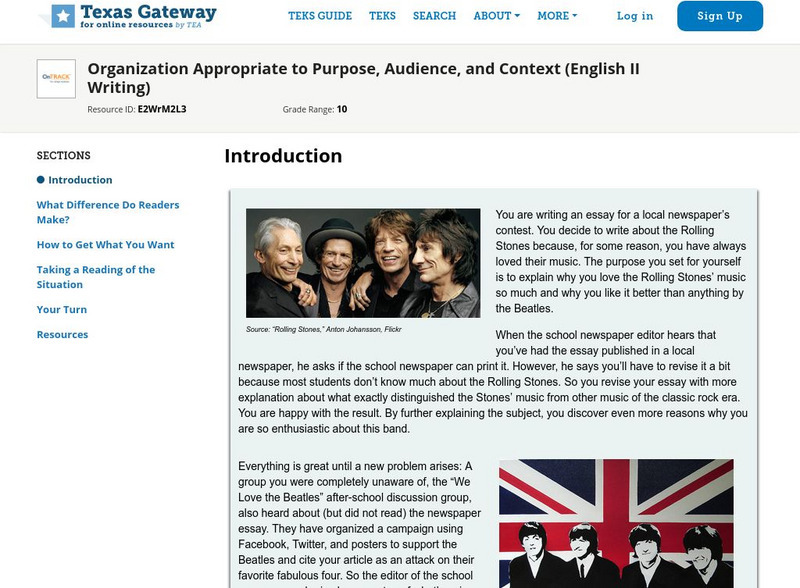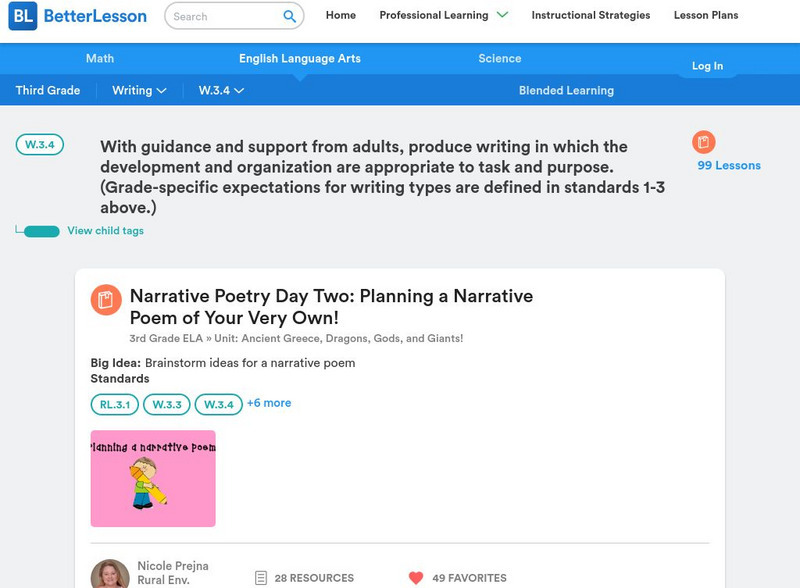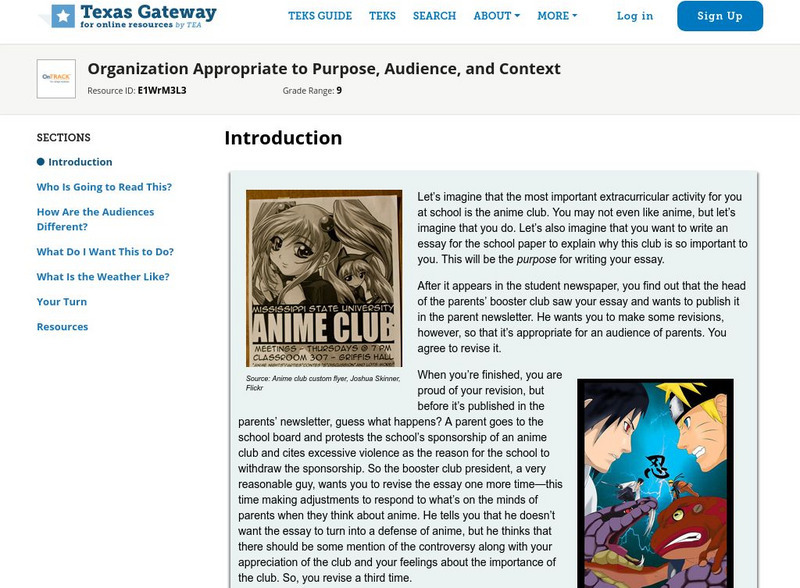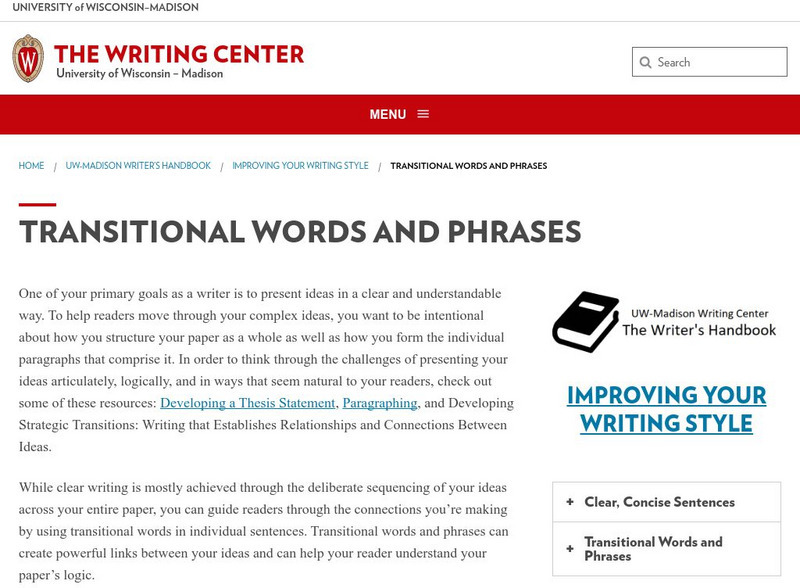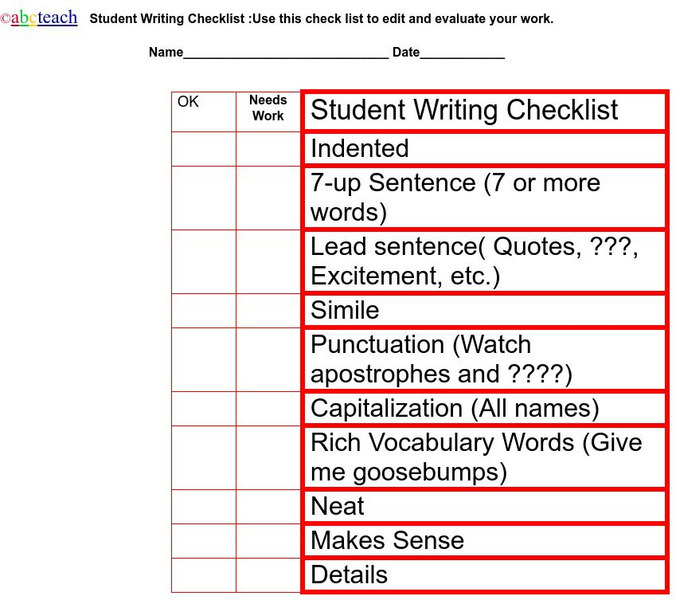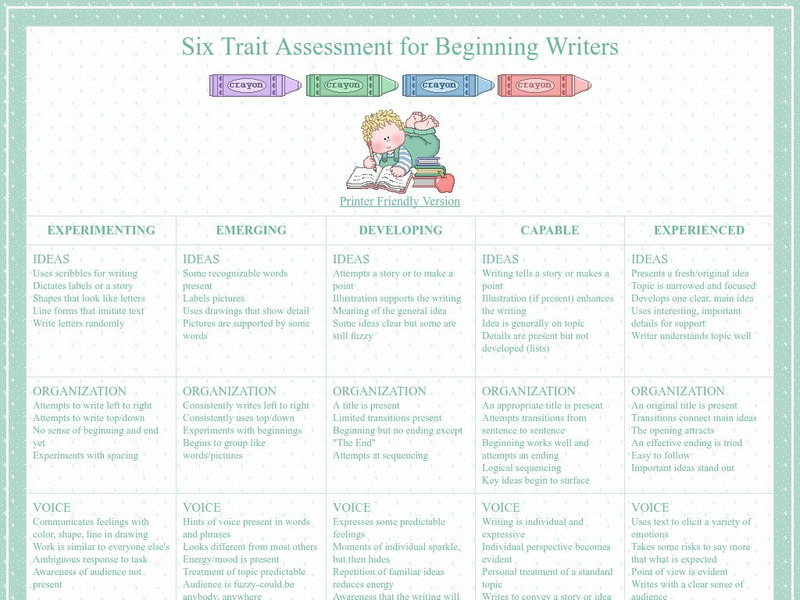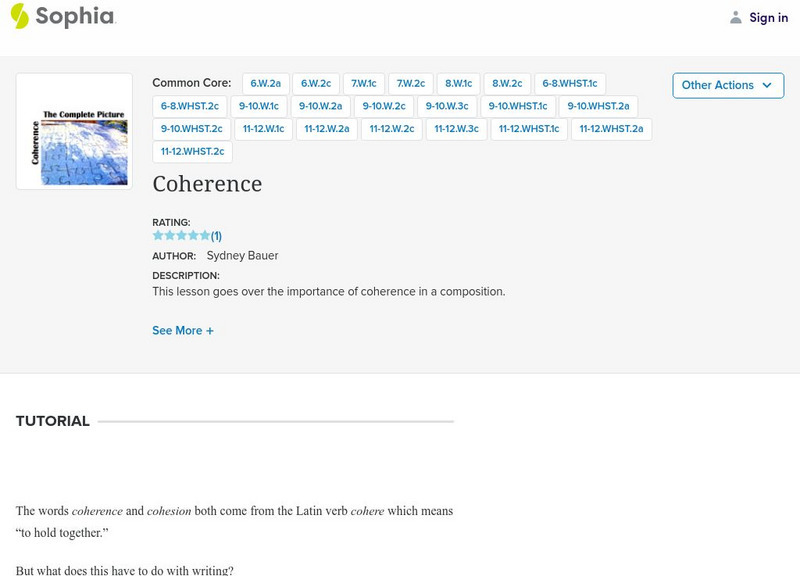Lumen Learning
Lumen: Writing About Literature: Additional Resources
This is "'The Legend of Sleepy Hollow': An Allegory for a Young America," an exceptional student example of literary analysis as well as an explanation to the main body of her paper. A link to the MLA website is also provided.
Texas Education Agency
Texas Gateway: Organization Appropriate to Purpose, Audience, and Context
[Accessible by TX Educators. Free Registration/Login Required] In this lesson, you will learn how to adjust the organization of your essay to make it appropriate for different purposes, different audiences, and different contexts.
University of Illinois
University of Illinois Urbana Champaign: Toefl Practice Site: Coherence and Unity
This site discusses coherence achieved through major and minor connector transitions. Examples are given, and there is a link to an exercise meant for the particular class this site was designed for, still useful practice for anyone....
Better Lesson
Better Lesson: W.3.2d: Provide a Concluding Statement or Section
Links to 8 lessons and activities that build student skills in standard W.3.2d: Provide a concluding statement or section.
Better Lesson
Better Lesson: W.3.4: Produce Writing Appropriate to Task and Purpose
Links to 99 lessons and activities that build student skills in standard W.3.4: With guidance and support from adults, produce writing in which the development and organization are appropriate to task and purpose.
Better Lesson
Better Lesson: W.4.4: Produce Clear Writing to Task, Purpose, Audience
Links to 89 lessons and activities that build student skills in standard W.4.4: Use a variety of transitional words and phrases to manage the sequence of events.
Texas Education Agency
Texas Gateway: Organization Appropriate to Purpose, Audience, and Context
[Accessible by TX Educators. Free Registration/Login Required] This lesson will teach you how to write and organize an essay so that it addresses different purposes, different audiences, and different contexts.
University of Wisconsin
University of Wisconsin: Using Transitions: Transitional Words and Phrases
Tables of words that show different types of sentence transitions. W.9-10.1c cohesion/clarity/reason, W.9-10.2c cohesion/clarity/transitions. CCSS.ELA-Literacy.CCRA.W.4, W.11-12.1c Transitions/Cohesion, W.11-12.2c Transition/Cohesion....
Other
Friends University: Patterns of Organization and Their Clue Words [Pdf]
Chart lists patterns of organization with their corresponding clue words.
Other
Tidewater Community College: Writing Center: Organizing Paragraphs and Essays
This page gives a quick, but thorough look at a few good ways to organize a piece of writing.
ACT360 Media
Sequence Paragraphs
Here are a few brief hints and key words to use when organizing a piece of writing by sequence or time.
abcteach
Abcteach: Student Writing Checklist
Excellent printable writing checklist that helps students proofread their pieces and pay attention to elements of strong writing.
Other
Rubric: Six Trait Assessment for Beginning Writers
Teachers will find this rubric useful in the classroom as a means of assessing student writing skills. It has a printer friendly version.
University of Ottawa (Canada)
University of Ottawa: Start With an Outline
This site from the University of Ottawa provides a brief, but effective, explanation of how to use a sentence outline to organize and shape your paper.
Other
Grammar book.com: Effective Writing
Brief list from The Blue Book with examples of how to take ineffective writing and transforming it into effective writing.
ReadWriteThink
Read Write Think: Lesson Plan: Audience, Purpose, Language in Electronic Messages
Lesson plan considers changes in writing style since the inception of e-mail and text messaging.
Sophia Learning
Sophia: Clarity: Avoiding Assumptions
This lesson discusses avoiding assumptions about the reader. CCSS.ELA-Literacy.WHST.6-8.4
Sophia Learning
Sophia: Coherence
Discusses the importance of coherence in a composition. CCSS.ELA-Literacy.CCRA.W.4. CCSS.ELA-Literacy.WHST.6-8.1.c
ClassFlow
Class Flow: Six Traits of Writing Organization
[Free Registration/Login Required] This lesson reinforces the importance of ensuring that purpose and pattern match well.
ClassFlow
Class Flow: The Powers of Writing
[Free Registration/Login Required] This resource outlines and defines the POWERS model for good writing.
University of Richmond
University of Richmond/getting Started
Scroll to the heading "Getting Started" to find several prewriting links. Topics include "Where to Start a Paper," "Keeping a Pre-writing journal," and "Exploring Ideas Through Cubing."
ClassFlow
Class Flow: Fishcheeks
[Free Registration/Login Required] This flipchart uses journaling and other writing activities to help students develop writing and vocabulary competencies.
ClassFlow
Class Flow: Writing Showing Feelings
[Free Registration/Login Required] This elementary flipchart shows how writers express feelings. Instead of telling the reader, they show the reader through descriptive writing.



